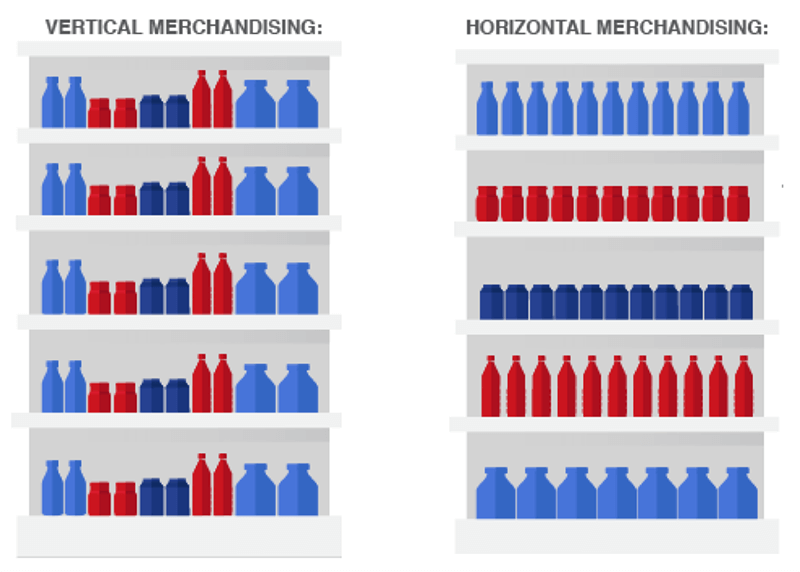Once a customer enters your store, you have precious little time to entice them to purchase and give them a memorable shopping experience. Most customers walk into a store for a reason, and it is the job of the retailer to make sure their store spaces inspire action from shoppers.
There are various merchandising tactics that retailers can use to maximise profits, but in this post, we are going to talk about the basics of vertical merchandising and how it can get shoppers to pay more attention to shelves that are below eye level.
What is vertical merchandising?
Vertical Merchandising is a technique or tactic whereby merchandise is displayed vertically in columns to encourage shoppers to consider more product options that are on the shelf. Adding vertical merchandising to your selling strategy will help drive more purchases.
Vertical Merchandising and Eye Level shelf
There are certain things which you know you should pay attention to but for one reason or another, you often miss them. It’s never intentional, but somehow you forget them and only realise it when it’s irrelevant. This happens not just in our everyday lives but in your stores too – like in those ominous bottom shelves which collect dust.
Most people naturally shop from left to right – the same way we read books and articles. Retailers in a similar fashion, place products horizontally in rows – starting at the top left and filling in shelves towards the right. This results in customers only seeing what’s in the sight zone – products that are at their eye level on the shelves.
Products below the eye-level shelf usually sell in less volume. Because two-thirds of a store's products are placed on shelves below the average customer’s eye level, retailers often choose to implement a merchandising technique to influence customers to pay more attention to the lower shelves.
The technique retailers use for this is called vertical merchandising - popular products are placed in vertical stripes, from the top to the bottom shelf by brand. The aim is to naturally influence customers to view assortments from top to bottom, down the aisle – giving bottom shelves a chance to be seen and shopped by customers. In the end, customers notice a larger assortment, and retailers get customers to buy from previously ignored shelves.
Visual example of vertical and horizontal merchandising:

Conclusion
Merchandising is not only about maximising profit – it’s also meant to give shoppers a great experience.
Learn how you can use space planning software and methods like vertical merchandising to sell more merchandise by booking a free consultation with one of our experts here.


